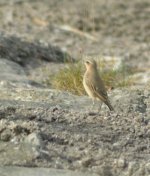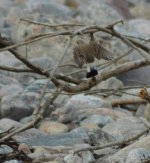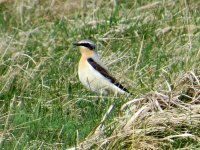To be honest Ive only joined to find out just what this bird is--Im in the East Midlands of the UK-Fen Country.
Ive seen the bird over the last 10 years but I can never get near enough to view it clearly or get a clear photograph so all I can tell you to help is the following:
It tends to habit ploughed fields mainly but it has been in my grass field twice.
The bird is a brownish colour, about the size of a finch, the real thing you notice is that when the bird flys away from you it has a very clear white rump when its in flight. (its not a Bull Finch) Its this white rump area that has me puzzled, I have been through my Bird books upteen times but cannot identify it--your help would be appreciated. (no other details known to help you
Thanks
Birdxman
Ive seen the bird over the last 10 years but I can never get near enough to view it clearly or get a clear photograph so all I can tell you to help is the following:
It tends to habit ploughed fields mainly but it has been in my grass field twice.
The bird is a brownish colour, about the size of a finch, the real thing you notice is that when the bird flys away from you it has a very clear white rump when its in flight. (its not a Bull Finch) Its this white rump area that has me puzzled, I have been through my Bird books upteen times but cannot identify it--your help would be appreciated. (no other details known to help you
Thanks
Birdxman






